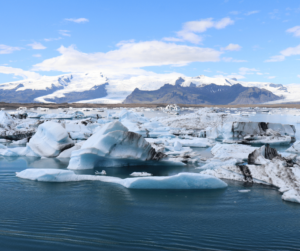 In 2015, 196 Parties signed a legally binding international treaty on climate change. The Paris Agreement set a goal to limit global warming well below 2 degrees Celsius, and ideally to 1.5 degrees Celsius compared to pre-industrial levels. Limiting warming is essential to avoid the worst impacts of climate change including rising sea levels and more severe and frequent heatwaves among other extreme weather events. Eight years later and studies warn that it is very likely we will exceed the 1.5 degrees Celsius threshold.
In 2015, 196 Parties signed a legally binding international treaty on climate change. The Paris Agreement set a goal to limit global warming well below 2 degrees Celsius, and ideally to 1.5 degrees Celsius compared to pre-industrial levels. Limiting warming is essential to avoid the worst impacts of climate change including rising sea levels and more severe and frequent heatwaves among other extreme weather events. Eight years later and studies warn that it is very likely we will exceed the 1.5 degrees Celsius threshold.
Scientists at the U.S. Environmental Protection Agency and the Department of Energy’s Pacific Northwest National Laboratory have conducted new research highlighting that current global climate pledges will not achieve the goals outlined in the Paris Agreement leading us to surpass the limit. If we are to minimise the extent of global warming, countries need to adopt more ambitious climate pledges while working to decarbonise their economies more quickly. All actions need to be focused on limiting the amount of time the planet spends in a warmer state.
 While exceeding the Paris Agreement targets appear inevitable, as part of their research, they demonstrate several potential courses where the overshoot period is shortened significantly. We need to limit the amount of time the planet spends over the 1.5 degrees limit and bring it back down as quickly as we can. The faster we can bring the global temperature back down, the less likely we are to experience the most harmful effects of global warming. If countries do not focus on setting more ambitious goals and doing more for the planet then we could face irreversible consequences for not just natural systems but also human systems. Deadlines for net zero pledges need to be brought forward and decarbonisation needs to happen faster.
While exceeding the Paris Agreement targets appear inevitable, as part of their research, they demonstrate several potential courses where the overshoot period is shortened significantly. We need to limit the amount of time the planet spends over the 1.5 degrees limit and bring it back down as quickly as we can. The faster we can bring the global temperature back down, the less likely we are to experience the most harmful effects of global warming. If countries do not focus on setting more ambitious goals and doing more for the planet then we could face irreversible consequences for not just natural systems but also human systems. Deadlines for net zero pledges need to be brought forward and decarbonisation needs to happen faster.
Time is the most crucial factor here; we need to act with urgency. We need to move the needle from 2 degrees to 1.5 degrees Celsius. Pledges at COP26 and COP27 are not enough, there is no guarantee that these will limit global warming to even 2 degrees Celsius. We cannot wait for another COP, countries need to be actively monitoring their impact on the planet. The focus needs to move to limiting the overshoot.
In the study, 27 emissions pathways are examined, looking at different courses of action and the following outcome. The most ambitious pathway outlined that net zero could be achieved by 2057. This would require rapid transformations in our energy systems globally and vast scaling up of carbon capture and storage alongside low-carbon technologies. Technologies including electric cars and renewables are important in achieving net zero, but the researchers also highlight the importance of carbon removal technologies. In contrast, if countries follow a two percent minimum decarbonization rate, net zero would not be reached this century.
 We are on the brink of exceeding a critical climate threshold, artificial intelligence has predicted that it is likely we’ll exceed 1.5 degrees of warming in the next decade and 2 degrees by mid-century. The model found that there is nearly a 70% chance that the 2-degree threshold will be exceeded between 2044 and 2065 despite a rapid decline in emissions. We have evidence of the impact of 1 degree Celsius of warming, we have all experienced it in some way whether through a heatwave, flooding, or another negative effect. As the planet gets warmer, these effects are only going to get more frequent and more severe.
We are on the brink of exceeding a critical climate threshold, artificial intelligence has predicted that it is likely we’ll exceed 1.5 degrees of warming in the next decade and 2 degrees by mid-century. The model found that there is nearly a 70% chance that the 2-degree threshold will be exceeded between 2044 and 2065 despite a rapid decline in emissions. We have evidence of the impact of 1 degree Celsius of warming, we have all experienced it in some way whether through a heatwave, flooding, or another negative effect. As the planet gets warmer, these effects are only going to get more frequent and more severe.
While we may overshoot the target thresholds for global warming, we can limit the time spent in the overshoot period. The overall takeaway is that we must strive for more ambitious climate action before it’s too late.






